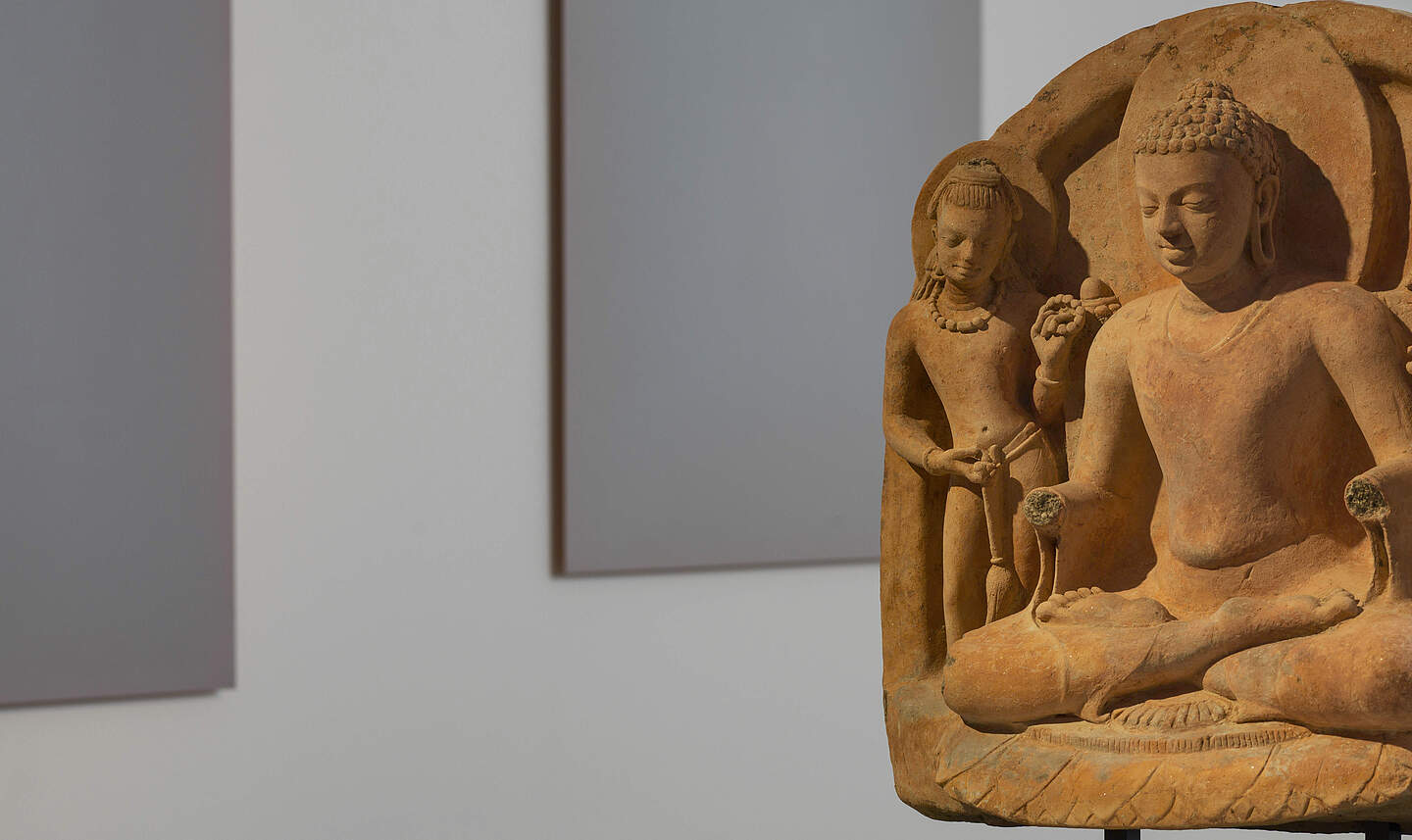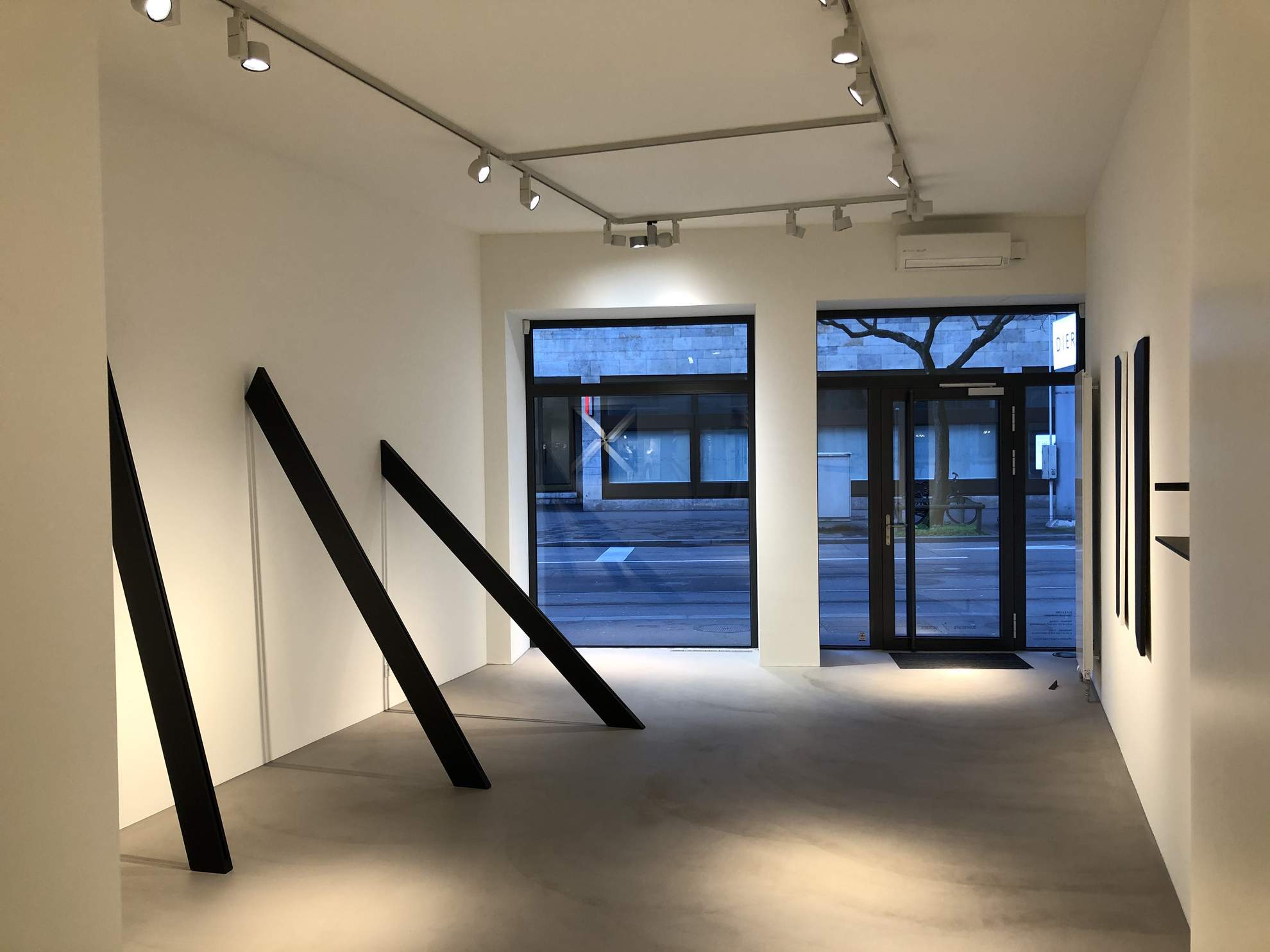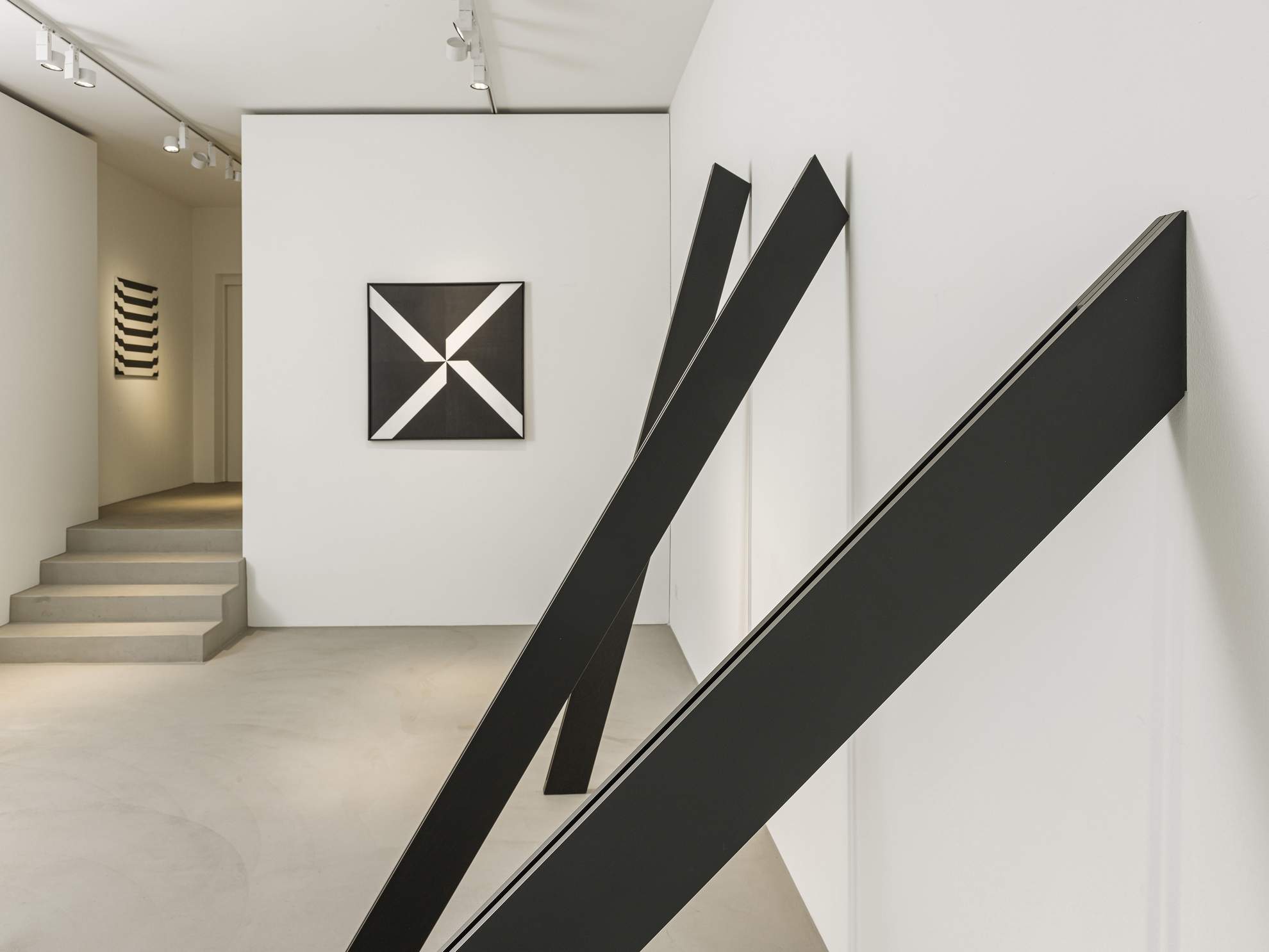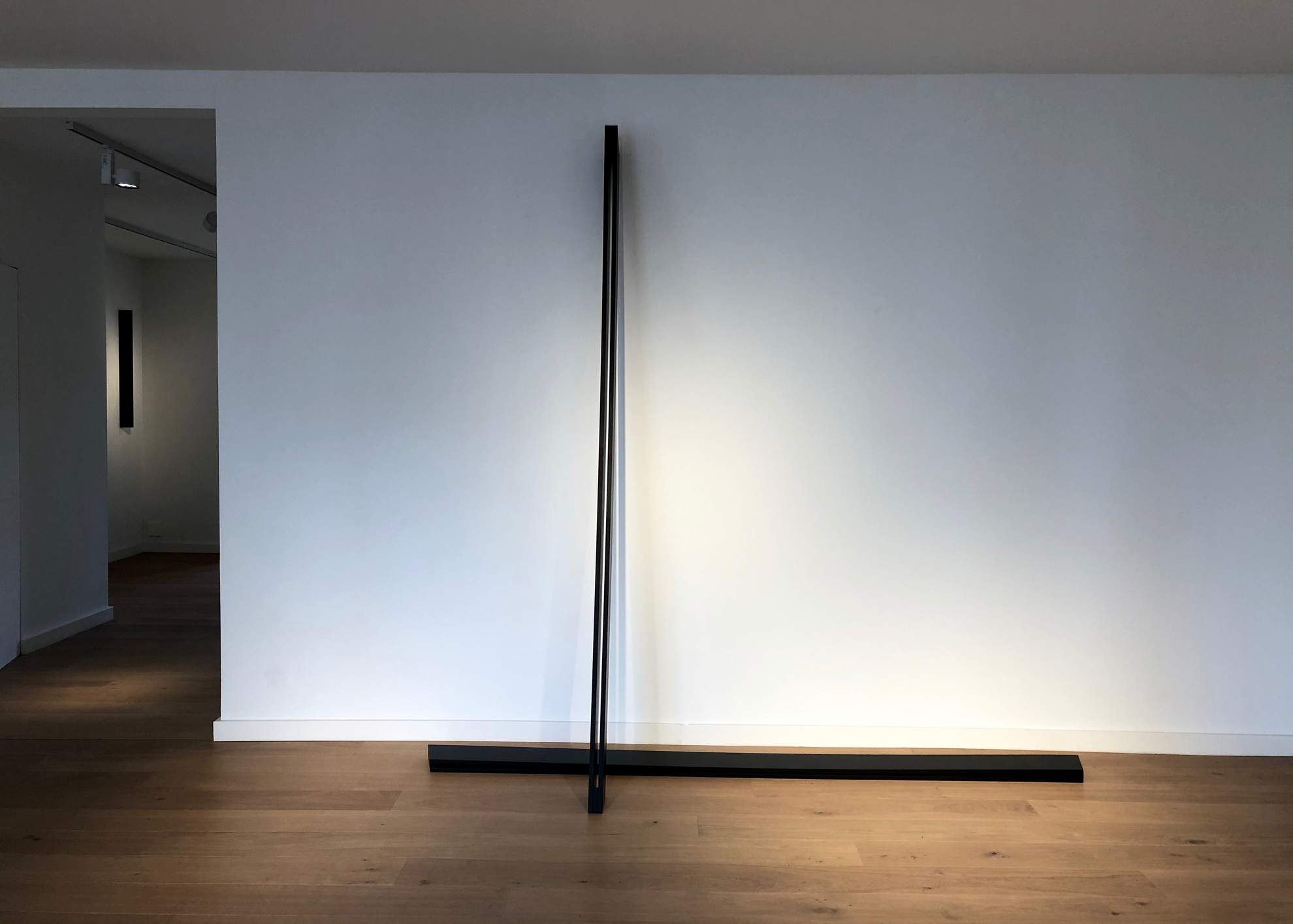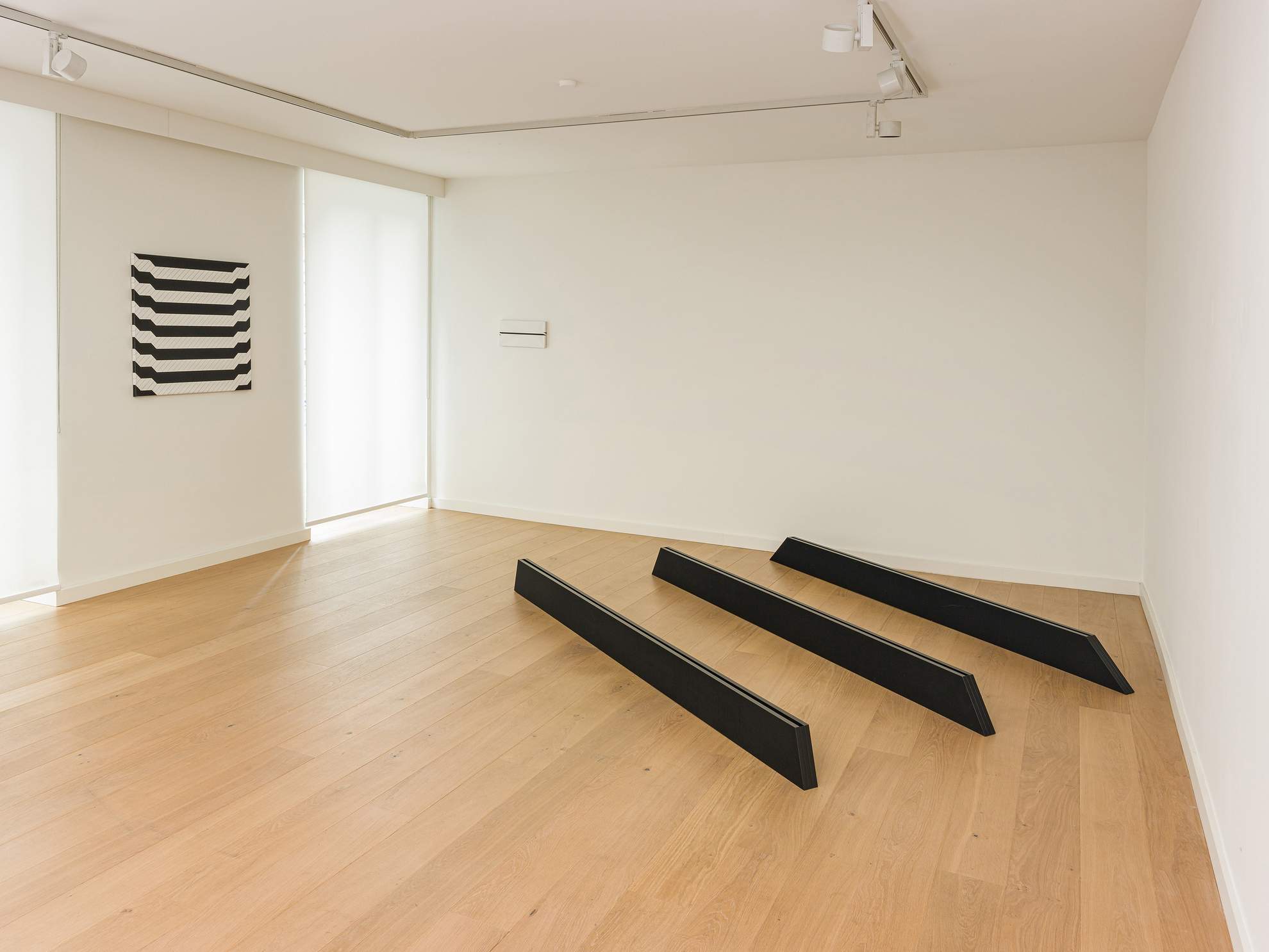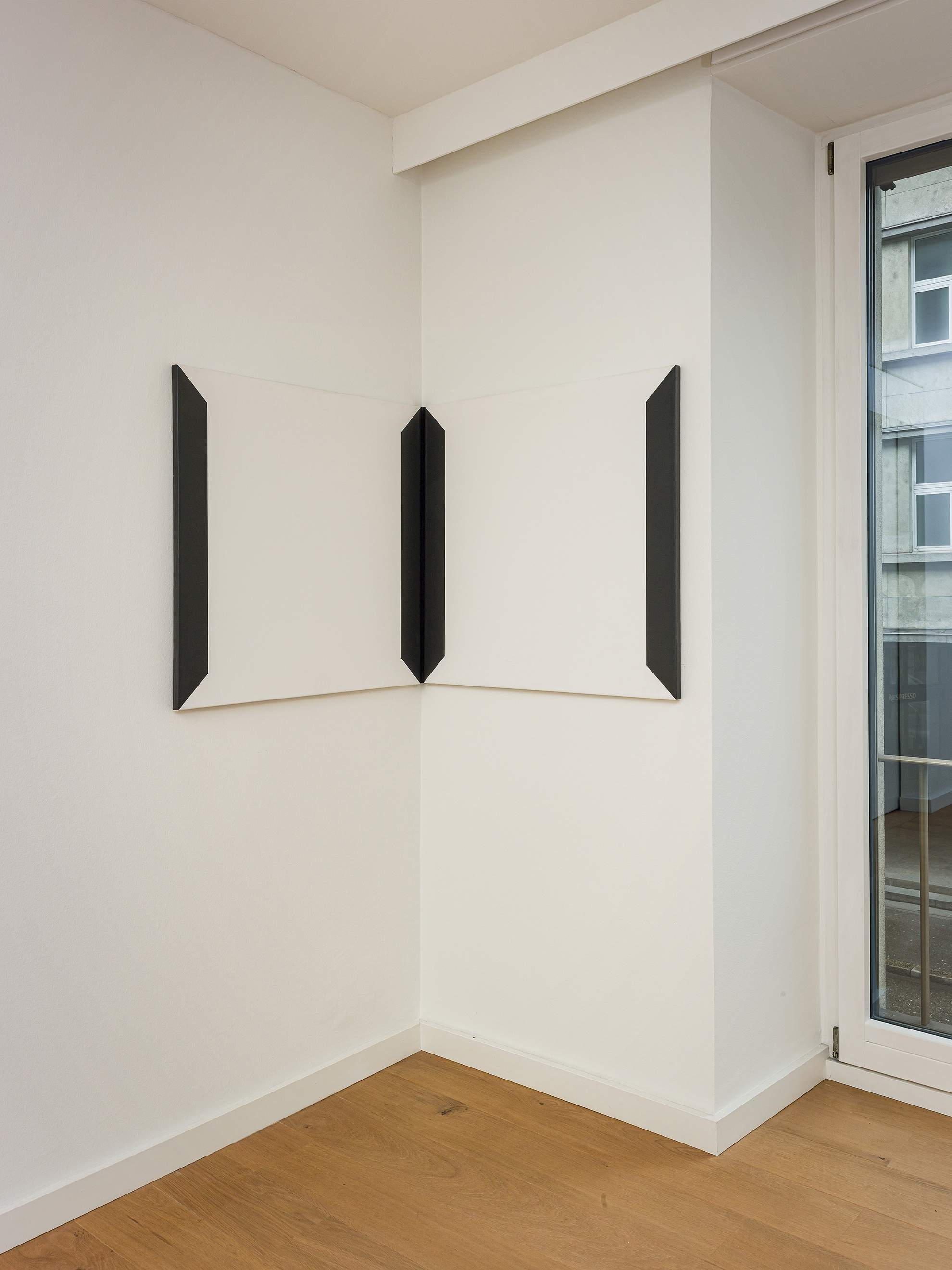
Imre Kocsis - concrete
Greetings to Tatlin
-
In collaboration with the Hubertus Schoeller Foundation and the Leopold Hoesch Museum Düren, Galerie Dierking is showing, on two storeys in the premises on the Paradeplatz, sculptures and pictures by Hungarian-born German artist Imre Kocsis (1937 - 1991). The exhibition was curated with the help of Isabel Kocsis, the artist's widow.
Reduction to black and white
is connected with the fact that my aim
is to draw visual processes without
an intermediary, such as content.
Imre Kocsis
Over more than 30 years, Imre Kocsis developed a clear, concrete-constructivist formal language. According to artist Klaus Staudt, however, Kocsis was not rooted art-historically in western European constructivism, but is manifestly to be placed in the early years of the Russian avant-garde, between 1910 and 1917 – after all, the Russians were fond of the diagonal and the spiral, and preferred space and cosmos to the static, constructed or orthogonal. Here comparison with Wladimir Tatlin is inevitable, particularly with his reliefs.
Unlike Tatlin, Kocsis set great store by colouration, black and white being the dominant colours throughout his artistic career. "My relation with the two colours I use is not metaphysical, but pragmatic; they are subordinate to my formal declaration. I see black as inseparably coupled with white. Black pictures are a displacement of white from the surface; that is, white is virtually reduced to zero. The converse process is equally conceivable. White displaces black."
Characteristic of Kocsis' art is the way he plays with various dimensions, often in order to create an illusion. Through the reduced selection of colour and the arrangement of geometrical forms, he achieves depth within the painting. This treatment of space is present also in his room-floor-wall objects, also reduced to black, and thus in the usually white rooms it is connected with the colouration of the paintings. He adds his black linear forms to a simple white room. Many relations between the works and the space – on the wall, to the wall, on the floor, between floor and wall, as well as corners and edges, form aesthetic structures that call in question or deliberately emphasise the right angle. His treatment of space and perception is complemented by light and shade. Thus, entering the exhibition space, the viewer perceives a varying perspective, so that a constant interaction between the viewer and the spatial construct makes a Kocsis exhibition an active experience.
The artist himself explains his choice of colours and forms: "Reduction to black and white is connected with the fact that my aim is to draw visual processes without an intermediary, such as content. My starting-point is the basic elements of geometry – point, line, plane – which are incorporated into a square grid structure. From the respective position of the basic elements within the grid, or the resulting disposition, there emerge shapes which, however, are subject to selection principles arising from the exploration of proportion and constantly changing. [...] Thus my works of recent years show concentrations, dissolution, progressions, processes no longer within the individually delimited pictorial plane, but in small interrelated plane units placed so as to incorporate the exterior space. My aim is to achieve a third dimension without plasticity; the planes are complemented by the interacting space. In turn, both are dependent on and alterable through the position of the viewer. This givess a visual experience which, as far as possible, should not be transformed into verbal language."
The exhibition in Galerie Dierking is designed to enable viewers to experience the outstanding art-space constructs, with the works dating from between 1972 and 1987, in the way Kocsis intended.

Imre Kocsis - concrete
Greetings to Tatlin
-
Reduction to black and white
is connected with the fact that my aim
is to draw visual processes without
an intermediary, such as content.
Imre Kocsis
In collaboration with the Hubertus Schoeller Foundation and the Leopold Hoesch Museum Düren, Galerie Dierking is showing, on two storeys in the premises on the Paradeplatz, sculptures and pictures by Hungarian-born German artist Imre Kocsis (1937 - 1991). The exhibition was curated with the help of Isabel Kocsis, the artist's widow.
Over more than 30 years, Imre Kocsis developed a clear, concrete-constructivist formal language. According to artist Klaus Staudt, however, Kocsis was not rooted art-historically in western European constructivism, but is manifestly to be placed in the early years of the Russian avant-garde, between 1910 and 1917 – after all, the Russians were fond of the diagonal and the spiral, and preferred space and cosmos to the static, constructed or orthogonal. Here comparison with Wladimir Tatlin is inevitable, particularly with his reliefs.
Unlike Tatlin, Kocsis set great store by colouration, black and white being the dominant colours throughout his artistic career. "My relation with the two colours I use is not metaphysical, but pragmatic; they are subordinate to my formal declaration. I see black as inseparably coupled with white. Black pictures are a displacement of white from the surface; that is, white is virtually reduced to zero. The converse process is equally conceivable. White displaces black."
Characteristic of Kocsis' art is the way he plays with various dimensions, often in order to create an illusion. Through the reduced selection of colour and the arrangement of geometrical forms, he achieves depth within the painting. This treatment of space is present also in his room-floor-wall objects, also reduced to black, and thus in the usually white rooms it is connected with the colouration of the paintings. He adds his black linear forms to a simple white room. Many relations between the works and the space – on the wall, to the wall, on the floor, between floor and wall, as well as corners and edges, form aesthetic structures that call in question or deliberately emphasise the right angle. His treatment of space and perception is complemented by light and shade. Thus, entering the exhibition space, the viewer perceives a varying perspective, so that a constant interaction between the viewer and the spatial construct makes a Kocsis exhibition an active experience.
The artist himself explains his choice of colours and forms: "Reduction to black and white is connected with the fact that my aim is to draw visual processes without an intermediary, such as content. My starting-point is the basic elements of geometry – point, line, plane – which are incorporated into a square grid structure. From the respective position of the basic elements within the grid, or the resulting disposition, there emerge shapes which, however, are subject to selection principles arising from the exploration of proportion and constantly changing. [...] Thus my works of recent years show concentrations, dissolution, progressions, processes no longer within the individually delimited pictorial plane, but in small interrelated plane units placed so as to incorporate the exterior space. My aim is to achieve a third dimension without plasticity; the planes are complemented by the interacting space. In turn, both are dependent on and alterable through the position of the viewer. This givess a visual experience which, as far as possible, should not be transformed into verbal language."
The exhibition in Galerie Dierking is designed to enable viewers to experience the outstanding art-space constructs, with the works dating from between 1972 and 1987, in the way Kocsis intended.
IMPRINT
© DIERKING 2025
